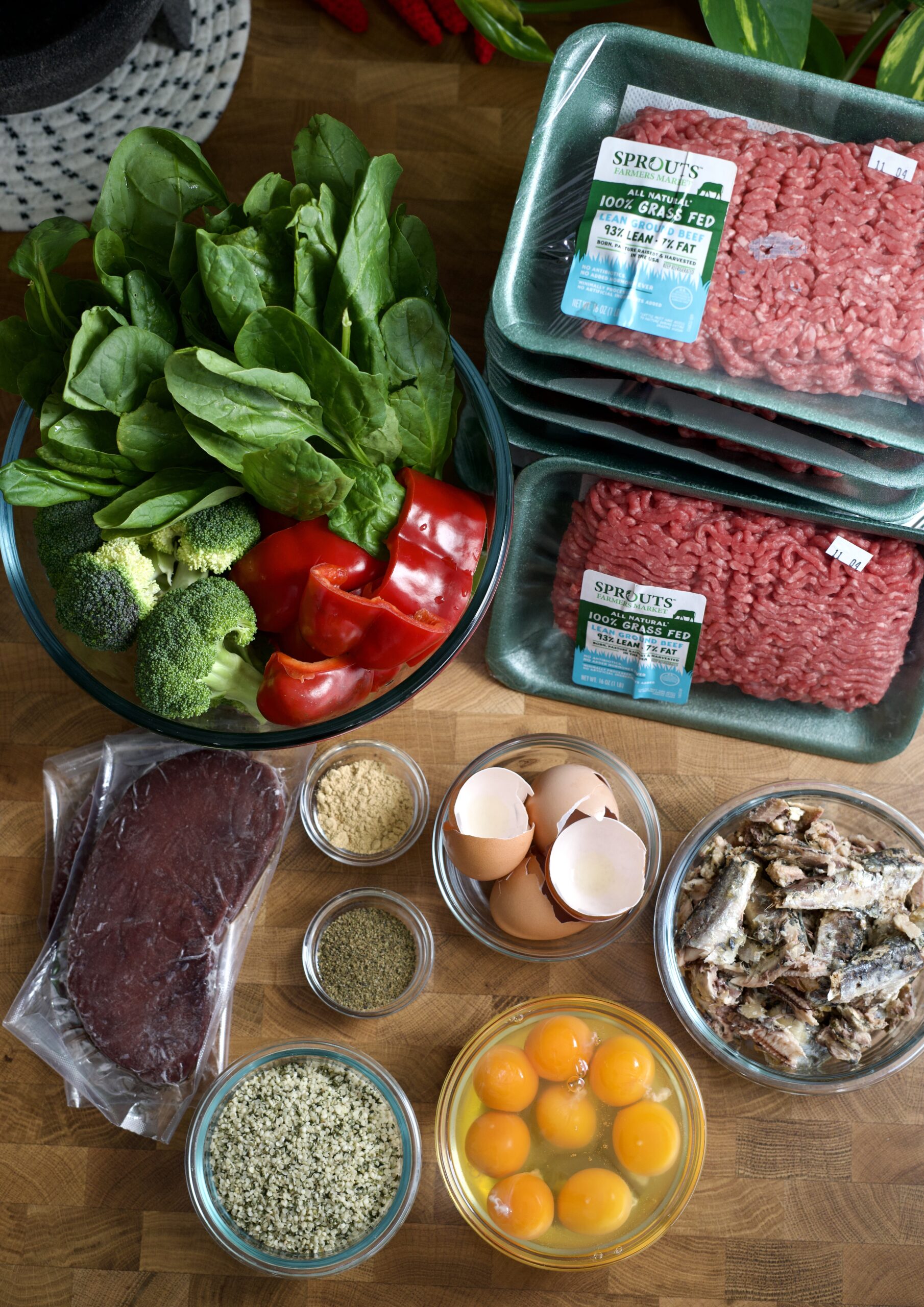Can you mix raw and cooked dog food? It is not recommended. Lightly cooking raw dog food can reduce harmful bacteria while preserving essential nutrients, offering a safer alternative for concerned pet owners.
Providing a balanced and nutritious diet is essential when feeding your dog. While raw and cooked dog food can be beneficial, combining the two may lead to health issues. Raw and cooked foods have different digestion times and various nutritional profiles, which can disrupt your dog’s digestive system.
Raw food is typically consumed quickly, while processed food takes longer. Mixing these types of food can result in an improper breakdown of nutrients and potential gastrointestinal problems for your furry friend. To ensure your dog receives the best possible nutrition, it’s best to feed them raw or cooked food exclusively.
The Debate On Mixing Raw And Cooked Dog Food
Pet owners have been very interested in the debate on mixing raw and cooked dog food. There are various opinions on whether combining these two diets for dogs is safe and beneficial. Understanding the safety concerns and nutritional benefits is crucial in deciding what to feed your furry friend.
Safety Concerns
Safety is a primary concern When mixing raw and cooked dog food. The main worry is the potential risk of bacterial contamination from raw meat. Bacteria like Salmonella and E. coli can threaten the health of both dogs and their human families. Proper handling, storage, and preparation of raw meat are essential to mitigating these risks. Additionally, it’s important to consult with a veterinarian to ensure that the combined diet meets the dog’s nutritional needs while minimizing health hazards.
Nutritional Benefits
Mixing raw and cooked dog food can offer a balanced nutritional approach. Raw diets may provide beneficial enzymes and nutrients lost during cooking, while cooked diets can be easier to digest and offer a wider variety of food options. Combining these two food types can provide a well-rounded diet that meets a dog’s nutritional requirements. It’s crucial to monitor the dog’s health and consult a veterinarian to ensure the mixed diet meets its nutritional needs.
Understanding Raw Dog Food
Understanding raw dog food involves exploring the compatibility of mixing raw and cooked options. While both offer benefits, caution is advisable to ensure your dog’s nutritional needs are effectively met. Proper research and consultation with a vet can help determine the best feeding approach for your furry companion.
Raw dog food is gaining popularity among pet owners looking for alternatives to traditional commercial dog food. But what exactly constitutes raw dog food? Let’s take a closer look.
What Constitutes Raw Dog Food
Raw dog food is simply uncooked or minimally processed food suitable for dogs. It typically consists of raw meat, bones, fruits, and vegetables. These ingredients mimic the natural diet of dogs’ ancestors, the wolves, and are often prepared at home by pet owners.
Here is an overview of the main components that constitute raw dog food:
- Raw Meat: This can include beef, chicken, turkey, lamb, or any other meat that is safe for dogs to consume. Raw meat provides essential nutrients and proteins that help maintain overall health and vitality in dogs.
- Bones: Raw bones, such as chicken or beef bones, are integral to raw dog food. They provide essential minerals, help clean teeth, and satisfy dogs’ natural chewing instincts.
- Fruits and Vegetables: Raw dog food often includes a variety of fruits and vegetables, such as carrots, apples, spinach, and broccoli. These provide essential vitamins, minerals, and fiber that support a dog’s digestive system and overall well-being.
- Supplements: Pet owners may sometimes add supplements like fish oil or probiotics to meet their dog’s nutritional needs. However, it’s important to consult a veterinarian before adding supplements to your dog’s diet.
Pros And Cons Of Raw Dog Food
As with any dietary choice, there are pros and cons to feeding your dog raw food. The following are some crucial things to think about:
| Pros | Cons |
|---|---|
|
|
It’s important to weigh these pros and cons carefully and consider your dog’s health needs and lifestyle before making a decision.
Now that we understand what raw dog food entails and its pros and cons, we can explore whether mixing raw and cooked dog food is safe.
Cooked Dog Food: Advantages And Disadvantages
When considering cooked dog food, there are benefits and drawbacks to consider. Understanding both sides can help you make an informed decision for your furry friend.
Benefits Of Cooked Dog Food
- Improved Digestibility: Cooked dog food is often easier for dogs to digest than raw food.
- Enhanced Palatability: Cooking can enhance the flavor of ingredients, making it more appealing to picky eaters.
- Reduced Risk of Bacteria: Cooking eliminates harmful bacteria that may be present in raw meat.
- Customization: Cooking allows you to tailor the ingredients to meet your dog’s dietary needs.
Drawbacks Of Cooked Dog Food
- Nutrient Loss: Cooking can lead to a reduction in the nutritional value of certain ingredients.
- Time-consuming: Preparing cooked dog food may require more time and effort than feeding it raw.
- Cost: Cooking dog food at home or buying pre-cooked meals can be more expensive than raw feeding.
- Potential for Overcooking: Overcooking can deplete nutrients and affect the taste of the food.
Credit: www.dogsnaturallymagazine.com
Balanced Nutrition For Dogs
Diet plays a crucial role in maintaining the health and well-being of your furry friends. Just like humans, dogs require a balanced diet with all the essential nutrients needed to thrive. A diet lacking certain nutrients can lead to various health issues in dogs, such as deficiencies, weakened immune systems, and even chronic diseases. To ensure your pup’s overall health and longevity, it is important to feed them a well-balanced and nutritious diet.
Essential Nutrients For Dogs
You need to consider several essential nutrients when providing your dog with a balanced diet. These include:
- Proteins: Essential for cell repair and growth.
- Carbohydrates: Provide energy to fuel their active lifestyles.
- Fats are needed to absorb fat-soluble vitamins and maintain healthy skin and coat.
- Vitamins are essential for many different body processes.
- Minerals are essential for maintaining strong bones and teeth and normal cellular function.
- Water: Vital for hydration and the proper functioning of organs.
Impact Of Mixing Raw And Cooked Food On Nutrition
Many dog owners wonder if mixing raw and cooked food in their pet’s diet can provide them with the balanced nutrition they need. While it is possible to create a balanced diet by combining both raw and cooked ingredients, it is essential to understand the impact this mixing can have on your dog’s nutrition.
Raw food diets are often praised for their high nutritional value as they contain natural enzymes and vitamins that may be lost during cooking. On the other hand, cooking food can help eliminate harmful bacteria and parasites that may be present in raw ingredients.
It’s important to note that simply mixing the two types of food without proper planning may not always result in a well-balanced diet. It is recommended to consult your veterinarian or a professional animal nutritionist to ensure your dog’s nutritional needs are met when combining raw and cooked food. They can guide portion sizes, nutrient ratios, and any necessary supplements to ensure your dog receives the optimal nutrition from their diet.
Overall, understanding the essential nutrients required for dogs and their impact on their health can help you make informed decisions regarding their diet. Whether you feed your dog raw, cooked, or a combination of both, the most important thing is to ensure they receive a balanced and nutritious diet that suits their needs.
Best Practices For Mixing Raw And Cooked Dog Food
Mixing raw and cooked dog food can provide balanced nutrition for your furry friend.
Observe the following recommended practices:
Consulting A Veterinarian
Before changing your dog’s diet, consult a veterinarian to ensure it suits their health needs.
Gradual Transition And Monitoring
Introduce the new diet gradually to your dog to avoid digestive upset. Monitor their health and behavior during the transition.
Remember: Balancing raw and cooked food for your dog requires proper research and careful consideration.

Credit: www.thewildest.com
Transitioning To A Mixed Diet
Transitioning to a mixed diet for your dog, including a combination of raw and cooked dog food, is possible. This approach allows for a balanced and nutritious meal plan, supporting their overall health and well-being. It is important to ensure the proper balance of ingredients and consult with a veterinarian to meet your dog’s specific dietary needs.
Transitioning to a Mixed Diet
When transitioning your dog to a mixed diet of raw and cooked food, it’s important to do it gradually. A Transition Period is essential to allow your dog’s digestive system to adapt to the new diet. This can prevent digestive upsets and make the transition smoother for your furry friend.
Transition Period
Mix a small portion of the raw and cooked food during the transition period. Gradually increase the ratio of raw to cooked food over a few weeks. This slow transition allows your dog to adjust to the new diet and reduces the likelihood of digestive issues.
Monitoring Health Changes
It’s crucial to monitor your dog’s health throughout the transition period. Watch for changes in their stool, energy levels, coat condition, and overall well-being. If you notice any adverse effects, such as digestive upset or changes in behavior, consider adjusting the ratio of raw to cooked food or seek advice from a veterinarian.
As you transition your dog to a mixed diet, ensure they get a well-rounded and balanced nutritional intake. Consult with a veterinary nutritionist or a veterinarian to create a diet plan that meets your dog’s needs. Additionally, they incorporate a variety of protein sources, fruits, vegetables, and supplements to support their overall health and well-being.
Remember that each dog is different, so what suits one might not suit another. Pay attention to your dog’s needs and preferences as you switch to a mixed diet. By taking a slow and attentive approach to transitioning, you can help your dog adapt to their new diet and thrive on a balanced combination of raw and cooked food.
Managing Safety Risks
Managing safety risks is a top priority when feeding your dog raw and cooked food. By understanding the safe handling of raw food and implementing proper food hygiene practices, you can ensure the health and well-being of your beloved pet.
Safe Handling Of Raw Food
Handling raw dog food carefully is important to minimize the risk of foodborne illness. Always wash your hands thoroughly before and after handling raw food. To avoid cross-contamination, use separate cutting boards and utensils for raw and cooked foods. Keep raw food refrigerated and thaw it in the refrigerator or microwave rather than at room temperature to prevent bacterial growth. Store raw food away from human food to prevent any accidental contamination.
Food Hygiene Practices
Maintaining a clean food preparation area is crucial when dealing with raw and cooked dog food. Regularly disinfect countertops, utensils, and bowls for your pet’s meals. When serving raw food to your dog, ensure it is consumed promptly, and any leftovers are refrigerated promptly to prevent spoilage. Always follow food safety guidelines when handling, storing, and preparing both raw and cooked food for your furry friend.

Credit: stellanspice.com
Can you lightly cook raw dog food?
Lightly cooking raw dog food is an option for pet owners concerned about pathogens while still seeking to maintain nutritional benefits. Cooking the food gently, such as lightly searing meat or steaming vegetables, can help reduce bacteria like Salmonella and E. coli without significantly degrading essential nutrients.
This method can make the food safer for both dogs and their human families, particularly in households with vulnerable individuals. However, it’s important to consult a veterinarian to ensure that the dog’s dietary needs are fully met and that cooking processes do not inadvertently eliminate necessary nutrients or enzymes.
Frequently Asked Questions On Can You Mix Raw And Cooked Dog Food
Can Dogs Eat Raw Meat And Cooked Meat Together?
Yes, dogs can eat raw and cooked meat together. It’s safe and provides variety. However, ensure the meat is lean and boneless, cooked thoroughly, and fresh and high-quality raw meat. Introduce new foods gradually and monitor for any adverse reactions.
Can You Alternate Raw And Cooked Dog Food?
Yes, you can alternate raw and cooked food for your dog to offer variety and balance in their diet. This can provide a mix of nutrients while ensuring safety and digestibility for your pet.
Can You Mix Cooked With Raw Food?
Yes, you can mix cooked with raw food. Just ensure proper food handling and storage to minimize the risk of bacterial contamination.
Is It Possible to Give a Dog Half Raw and Half Kibble?
Yes, you can feed your dog a mix of raw and kibble food for a balanced diet.
Conclusion
Mixing raw and cooked dog food can be a beneficial approach for your furry friend’s nutritional needs. Combining the benefits of both types ensures a well-rounded diet that provides essential nutrients and variety. However, it’s important to consult your veterinarian to determine the right balance and proportions for your dog’s specific dietary requirements.
Their health and well-being should always be the top priority when making feeding decisions.

I’m a Canada, UAE, US, and UK-based writer and dog expert blogger. I spent over five years learning about dog food and grooming techniques. Additionally, I recommend avoiding and properly treating various physical problems in dogs. I am here to share my knowledge about good dog nutrition and care.

